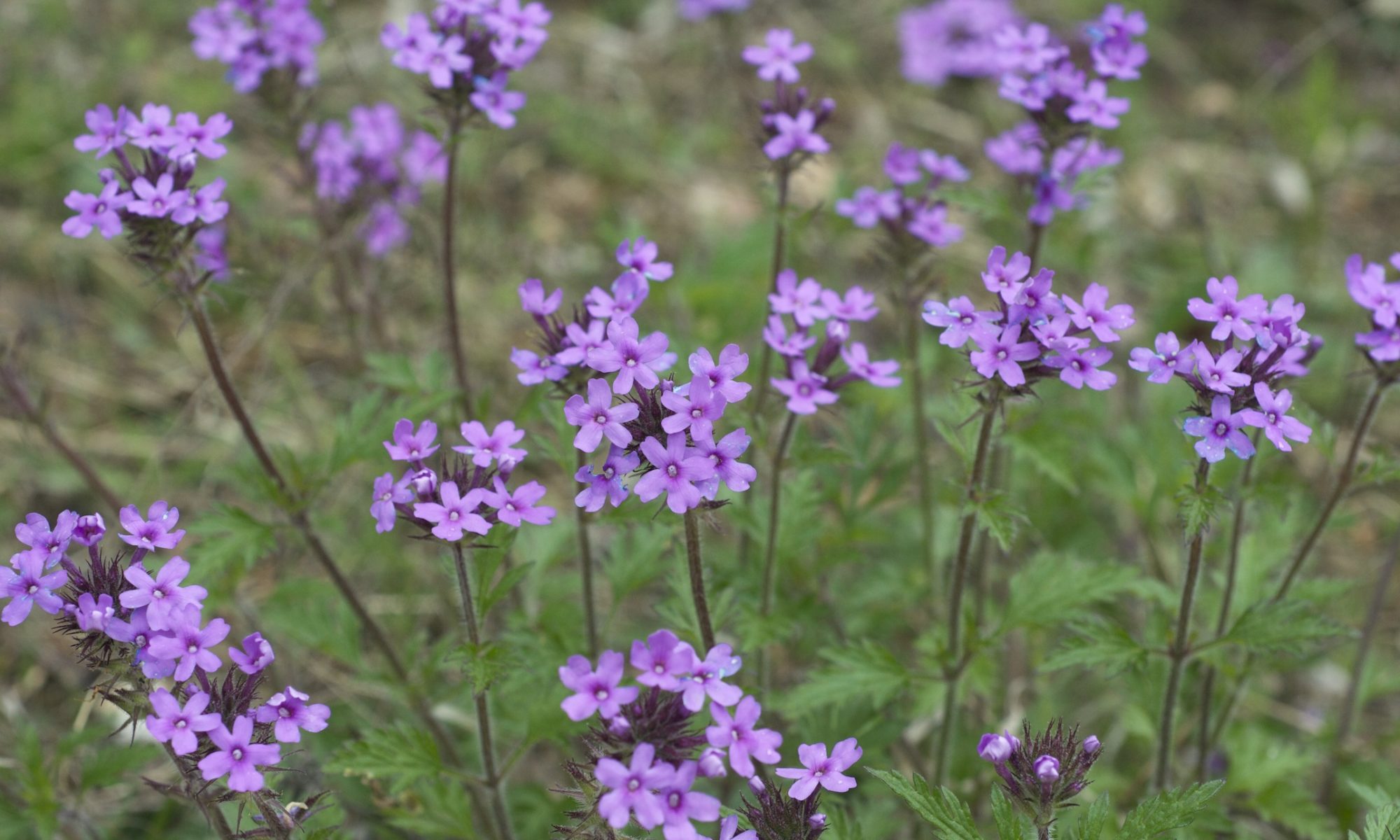Lemon verbena is one of my favorite aromatic tea herbs. It belongs to a delightful family of unique, fragrant plants favored by pollinators and used in different cuisines.
The Verbenaceae family of about 1,200 species has mostly tropical flowering plants with hairy, serrated leaves and spikey—sometimes woolly—inflorescences made up of small fragrant flowers. Most are native to the Americas, although the true vervains are native to Eurasia.

Fragrant Flowers That Pollinators Love
The fragrant, attractive flowers of this family’s species make them popular with pollinators like birds, butterflies, and bees.
The beebrushes (Aloysia), of which lemon verbena is a member, are typically aromatic shrubs and trees. Lemon verbena is renowned for its delicate, lemony scent and flavor, which I will revisit later. Sweet almond verbena or incense bush is a drought-resistant shrubby bush with an intense almond fragrance that attracts butterflies and hummingbirds.

The lantanas are also popular with pollinators. The tubular flowers of common lantana come in many colors along with a peppery, “tutti frutti” smell and nectar that entices many butterfly species. The flowers change color at different stages in their life, which is thought to act as a signal to pollinators.


Unlike the rest of the plants in this family, the true vervains (Verbena sp.) include some species native to Europe and Asia, represented by common vervain. The vervains have a long association with folk medicine and divine or supernatural forces; for example, vervain flowers are engraved on Italian folk charms to ward off witchcraft. Like others in the family, the vervains have fuzzy leaves and spikey inflorescences. Their typically small, sometimes tubular flowers consist of usually blue or purple petals.

Some species in this family prefer a dry, hot environment and marginal or disturbed homes. The mock vervains (Glandularia sp.) prefer environments such as dry prairies, sandy rocky deserts, and glades and bluffs. The hoary verbena (Verbena stricta) is a drought-resistant small purple spiking wildflower growing in meadows and fields of the central United States.


Aromatic Culinary and Medicinal Herbs
Lemon verbena, also known as lemon beebrush, is a favorite among gardeners and cooks for its delicate, lemony fragrance and flavor that goes well in both savory and sweet dishes and especially as a flavoring for beverages like tea and liqueur. Research confirms its antioxidant, antimicrobial, and sedative properties, although therapeutic usage is not confirmed. Its wide medicinal, aromatic, and culinary usage in Latin America dates back to the Inca period. The most popular method of using it is in leaf infusions for a refreshing drink and to flavor beverages like the mildly alcoholic chicha, the Peruvian soda Inca Kola, or yerba mate, a caffeinated drink favored in Latin America.

I was surprised to learn about a number of other fragrant culinary herbs in this family such as the tropical, fragrant lippas. The leaves of some lippias are culinary herbs used similarly as oregano to which they are not closely related. One that is particularly interesting is koseret (Lippia abyssinica), a flowering shrubby herb endemic to high altitudes in Ethiopia and cultivated throughout tropical Africa. It is dried and used as an herb in Ethiopian cuisine; it has a camphorous and minty fragrance and flavor purportedly similar to basil. It is commonly included in niter kibbeh, a spiced clarified butter or oil, as well as afrinj, a spice mix. Mexican oregano (Lippia graveolens), meanwhile, is widely used across Mexico and Central America. Its flavor is similar to that of oregano, but, again, it is not closely related to oregano.

The leaves of bushy lippia (Lippia alba) are used medicinally as well as to flavor food such as Oaxacan mole sauces. Another fragrant and edible plant of note is the pineapple verbena (Nashia inaguensis), an evergreen Caribbean shrub. It likes trailing along sunny, rocky outcroppings and its aromatic leaves are used to make an herbal tea described as tasting like citrus, vanilla, or pineapple.

Another aromatic herb in this family is Aztec sweet herb (Phyla dulcis), so called because of the sweet taste of its leaves. A unique chemical composition causes naturally sweet “button” buds which are used as a natural sweetener and medicinal herb in its native Mexico and Central America. The taste is reminiscent of stevia but much better in my opinion.

Research on the phytochemical and cosmetic uses of lippias, verbenas, vervains, and others is ongoing. Studies have identified antimicrobial properties in various plants of this family, such as lantanas, lippias, and beebrush. It should be noted in particular that beebrush and other members of this family have been shown to have phototoxic and photosensitivity properties; in the European Union, their use is banned in the production of fragrances.
Pretty But Proceed with Caution
Although they are favored ornamentals and pollinator attractors in some places, in other places they are considered highly invasive, especially species of the Duranta genus, lantanas, and porterweedsand and especially in biodiverse environments like Australia, South Africa, islands of Oceania, and Southeast Asia. Their predilection for disturbed sites, vigorous growth, and attractiveness to birds for their fruit means they can take over locally unique plant varieties.


There are always outliers in any plant family, often growing in isolated or island environments. The unique ground-hugging Junellia species grow in succulent mats along the sandy rocky ground as far south as Patagonia and the Falkland Islands.



